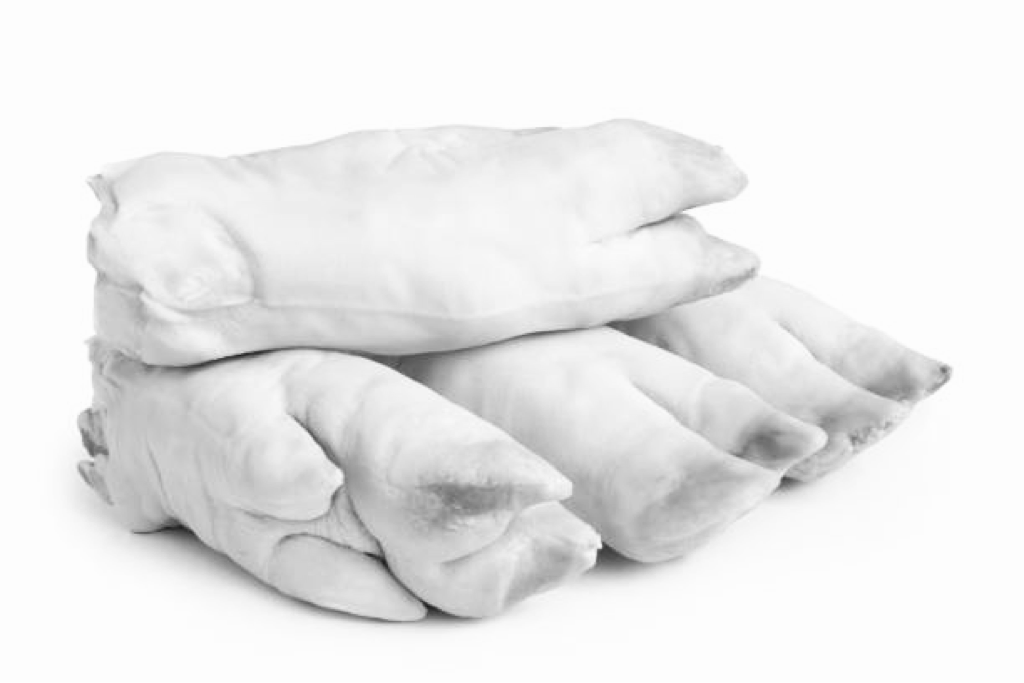
To learn more about our RealSuture 6-Layer Suture Pad click here.
Repetition is a key component of mastering any skill set. Neural pathways are being reinforced and strengthened with every practice. However in order to master said skill, practice needs to be intentional and consistent (Kimura & Nakano, 2019). Recall the old adage: Practice makes perfect. When it comes to surgical skills such as suturing, knot tying, excisions and so on, not all practice materials are as worthwhile and accommodating as others. Combining repetitive practice with poor quality materials that fail to represent real life situations, reinforces erroneous neural connections, in terms of hand-eye coordination and muscle memory, all of which will inevitably affect the surgical procedure and patient outcome.
Currently in many medical programs, the materials available for wet lab surgical exercises are porcine feet, sponges and cadavers. These may be cheaper options up front, but their uses are limited and the end cost may be more than silicone suture kits.
WHY ONE SHOULD AVOID PRACTICING SUTURES ON PORCINE FEED AND CADAVERS
The downsides of pigs’ feet, sponges and cadavers are varied and numerous.
- Unrepresentative of live tissue. Dead tissue is not a good representation of the living tissue students would later encounter when performing surgery on their patients. The texture, structure, elasticity are all very different from that of living human tissue. Cadaver specimens are leathery and stiff, being devoid of the water and blood components present within real tissue.
- Limited use. The limited number of sutures that can be posed significantly reduces the number of times the material can be reused. The average specimen of pigs’ feet and cadavers can be used up to 2 to 3 times in one sitting at most. Due to general evaporation, pigs’ feet will become dry over time and lose all semblance of living tissue.
- Extra resources needed. Not to mention, the whole setting up and disposal is tedious and hazardous, requiring the physical space of a wet lab, extra time on the part of staff and sanitation products for cleaning up afterwards. Moreover, some students cannot practice on porcine feet for religious reasons. (Insert link https://surgireal.com/blogs/news/suture-practice-why-suture-pads-are-superior-to-pigs-feet). And when practicing on cadavers, ever more resources are needed for acquiring the samples, going through all the logistics of paperwork and transporting them to the designated anatomy lab. Oftentimes, some students will only get to watch on the side, as the teacher or a select few students practice on the cadavers due to the limited number of samples available.
- Accessibility problem. Simulative surgical practice is limited due to poor accessibility of high quality simulative materials. It is far from realistic to think that students can get their hands on pigs’ feet once a week for self-directed practice at home. And even when they go out of their way to get some porcine feet, the longevity of these materials is greatly lacking.
An insightful study was performed comparing molded 3D silicone suture pads with porcine feet and sponges among a group of fourth year medical students who had already performed sutures on average 46.0 (SD = 66.0) times prior to the study. In other words, the subjects were good candidates with extensive surgical experience with live human tissue. The results were a resounding confirmation that silicone pads are head and shoulders above the other materials (Boyajian & al., 2019). Through various assessments of suture techniques such as interrupted sutures, running sutures, knot tying on each given material, the suture pads always scored significantly higher. Every single one of the participants (N = 25) admitted that the silicone suture pad was the best tool on which one could practice their suturing skills. And a great majority of them N = 23 also stated that if their medical schools used these suture pads their suturing skill would be much better than it is now. The take home message being that medical institutions and students should do their best to invest in quality training and learning materials for optimal skill development.
To learn more about our RealSuture 6-Layer Suture Pad click here.
REFERENCES
Kimura, Takehide & Nakano, Wataru. (2019). Repetition of a cognitive task promotes motor learning. Human Movement Science. 66. 109-116.
https://doi.org/10.1016/j.humov.2019.04.005.
Boyajian, Michael & Lubner, Rory & Roussel, Lauren & Crozier, Joseph & Ryder, Beth & Woo, Albert. (2019). A Novel Suture Training Device to Innovate the Surgical Curriculum in Medical School. Plastic and Reconstructive Surgery - Global Open. 7. 121-122. 10.1097/01.GOX.0000584920.24826.29.
